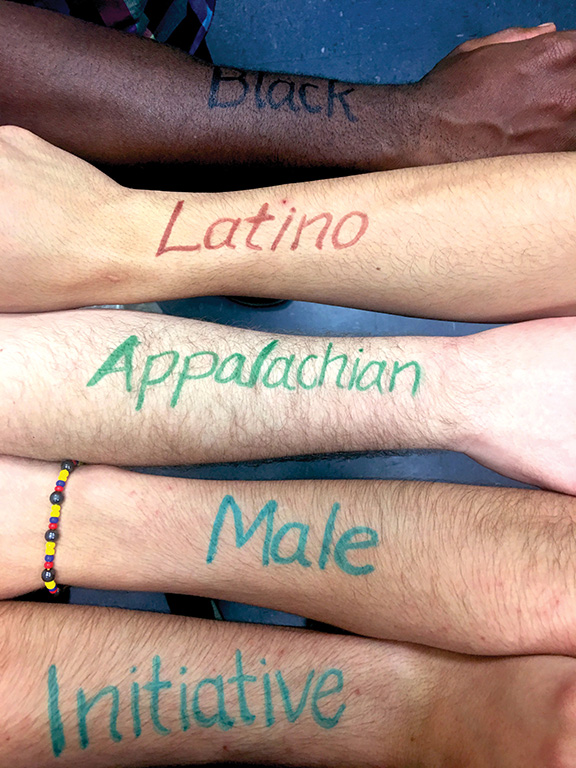For several decades, the news about males and education has not been good. With a national retention rate of only 44 percent, African-American and Latino males have higher college dropout rates than other ethnic groups. Of all racial and ethnic groups, African Americans and Latinos show the largest gender gaps in college enrollment rates, though growth in male college enrollment across the board lags behind female counterparts by nearly 10 percent nationwide. In the years between 1976 and 2010, the percentage of men enrolled at higher-education institutions fell 42 percentage points compared to their female counterparts.
Several common factors contribute to these statistics, including feeling alienated at college; struggling to fit into the dominant culture; experiencing negative stereotypes; and having trouble dealing with pressure from family and friends. These challenges transcend ethnic identity, and so, despite being from different backgrounds and cultures, male students share common struggles in obtaining success in higher education.
A successful effort
To transform struggle to success, Berea College has developed three male initiatives to address the problem of male retention and to mitigate dropout rates within these segments of the student population. Developed in 2016, the Black Male Leadership Initiative (BMLI), Appalachian Male Initiative (AMI) and Latino Male Initiative (LMI) classes are designed to help Berea’s male students succeed in college and beyond.
[column type=”1/2″]
[content_band style=”color: #333;” bg_color=”#f9f9f9″ border=”all” inner_container=”true”]
Graduation rate 2008-2010
[skill_bar heading=”All first-year students” percent=”62.8%”]
[skill_bar heading=”First-year African American male students” percent=”49.2%”]
[skill_bar heading=”First-year Appalachian male students” percent=”44.5%”]
[skill_bar heading=”First-year Hispanic male students” percent=”46.75%”]
2010-2013
[/content_band]
[/column]
These classes help students realize and accept their identity, teach soft skills such as time management and communication, and foster comfort within these groups that lead to improved critical thinking and more openness in discussing sensitive issues concerning their background. Male students also are taught about their culture and heritage.
“My class accomplishes identity realization by reading about the history of African-American men, learning about past and current role models and discussing issues in the news involving African-American men,” said Dr. Jose Bey, associate professor of African and African American Studies, who teaches the Models and Mentors course.
Reflections and journals are another key component of the classes. Through reflection and discussion, male students are able to explore the positive aspects of their heritage and background.
“There is a positive change in most of my students by the end of the semester to have more confidence and
to be accepting of their culture and heritage,” said Dr. Dwayne Mack, Berea’s interracial historian who also teaches the Models and Mentors course.
“Appalachia was a place I was scared to call my own because of its poor and stereotypical representation,” agreed Cole Dutton ’21, a freshman in Appalachian Studies 121. “I did not want to be associated with Appalachia, but now I embrace it.”
In addition to those classes, there is the BMLI, a program run by Keith Bullock Hon. ’17 that addresses dropout rates among African-American men at Berea College. In his role as coordinator, Bullock helped facilitate a campus-wide assessment and found there was a definite need to address drop-out rates among African-American male students on campus. Though he primarily works with African-American students, Bullock works with young men of all racial groups, and often his speakers and workshops overlap with material from the other classes, explained Adriana Núñez, who teaches the LMI class. Núñez is a Jessie Ball duPont Fund PostDoc Fellow who serves as a visiting instructor for Latino male success.
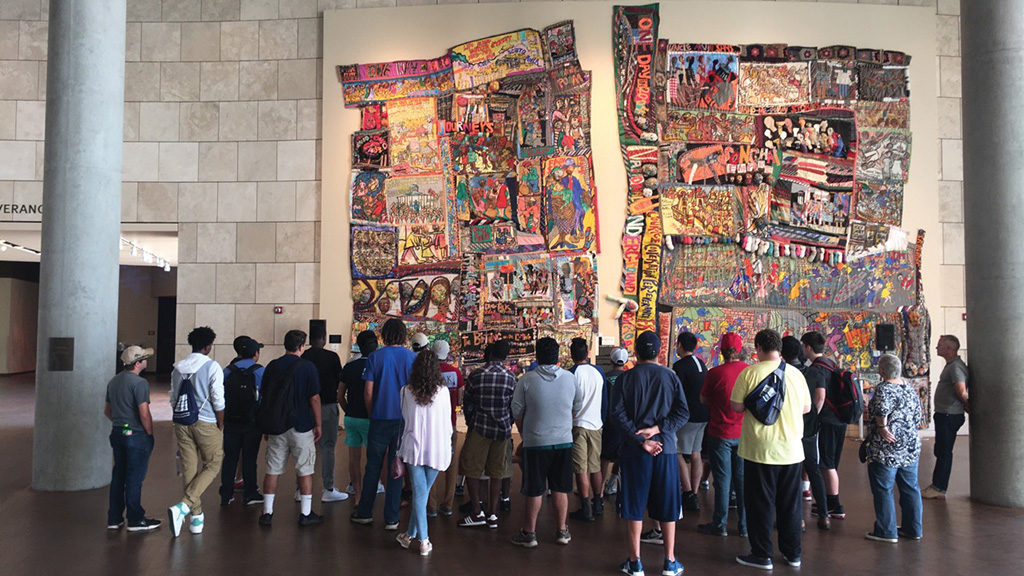
“We are bringing all of these male initiatives together because we share similarities, and we desire to impact the college in a positive way,” Bullock said.
While these groups have shared similarities, each course addresses the cohort’s individualistic culture as well. Through their classes, they are able to learn their history and see their values enacted in history, said Dr. Chris Green, director of the Loyal Jones Appalachian Center.
“The atmosphere and structure of the class, being around students who are similar to you, is a place to calm down and learn about where you came from,” Dutton said.
BMLI
The BMLI functions with two components that foster the retention rate of African-American males at Berea College: the program that Bullock leads and the Models and Mentors class. The program is geared towards first- and second-year students, but upperclassmen are involved, Bullock said.
“It’s upperclassmen and underclassmen in the program; we learn from each other and look out for each other,” said Aldrin Vinton ’18, a psychology major at Berea College. “We hang out with each other and go to events together. At the beginning of the year, we give tips and tricks to be successful to underclassmen such as writing resources.”
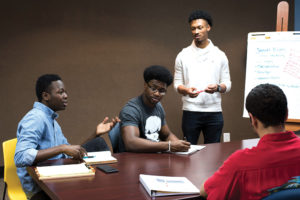
While serving as the Berea College bus driver several years ago, Bullock was very involved in the lives of young African-American men. In 2012, he joined with a few faculty members and started a program called Brother’s Keeper, which was the predecessor to BMLI. By 2015, Bullock was working full time, interacting with 60 to 70 students in a week. The personal challenges he faced growing up motivated him to lead this program. His mission is to teach participants not to limit themselves or allow others to place limits on them.
“Growing up, there was nothing like this for me,” he said. “There were negatives for why I could not [do certain things]. There was never encouragement for what I could do.”
For Vinton, BMLI has played an important role throughout his college career. He took a leave of absence during his sophomore year. When he returned, he became heavily involved in BMLI. Since then, Vinton said he has seen positive changes in his maturity and character which he attributes to conferences and experiences provided by BMLI, like going to Washington, D.C. for the opening of the National Museum of African American History and Culture.
“There are stereotypes of black males being uneducated, while black females are doing very well,” he said. “In academia, black males have to feel comfortable, like they belong. BMLI is a support system; it’s a brotherhood where you can come and be yourself.”
Vinton remembers seeing African- American men drop out in their senior year at Berea, and how that impacted the underclassmen. BMLI participants meet twice a week to help reduce uncomfortable feelings and create a sense of bonding.
The goal of the class is to help students realize their positive experiences and also help them succeed during college and after by looking at African and African-American role models and history, such as Malcolm X and Martin Luther King Jr. They then analyze the leadership styles of these men and how they can apply those skills to their own lives to be successful.
“The only words to describe my experience with this class is mind blowing,” said Jordan Berry ’21, a freshman in the Models and Mentors class. “Usually in history you have to memorize a lot of dates, but analyzing these figures is critical to thinking about being black in the United States. This has shaped my own outlook of myself and the capability I have.”
The class also addresses current issues such as police brutality or political changes in the U.S. Students are encouraged to discuss what they learn in class and write about it in their reflection journals.
“I have a greater appreciation for my own people and heritage,” Berry said of learning about his history. “It has changed my own way of thinking.”
AMI
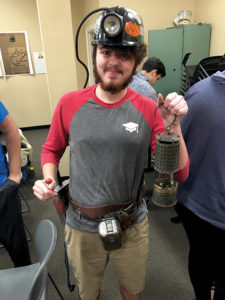
The Appalachian Male Initiative is structured similar to BMLI, except currently there is not a program that accompanies the Appalachian Studies 121 class. In fall 2012, Dr. Chris Green started conducting research about Appalachian male dropout rates through surveys, focus groups and other data. That data showed Appalachian males had the lowest retention rate of all student groups at the College. In 2015, Academic Vice President Chad Berry met with Green and Bullock to start the Appalachian and Black Male Initiatives.
The class is a success due to the collaboration of its members, which include Green, Dr. Bobby Starnes, instructor; co-instructor Damon Rosenbarker; and Richard Childers ’16, AMI advocate and mentor.
“Appalachian male students often have a position of high responsibility at home,” Starnes expressed as a common theme among Appalachian males. “There is a large commitment to their families, because things might fall apart at home while that student is gone. We want to make sure we are protecting their connection to home and also making it comfortable for them at Berea College.”
Relationships are created and fostered beginning with the first class, when Rosenbarker—a carpentry technician at the College—leads students and class leaders on a hike. During the fall 2017 semester, students learned how to cook cornbread over a fire after grinding the corn with an old stone grinder.
“Activities like this are important because Appalachians have a lot of skills and wisdom,” Starnes said. “Damon takes some of those skills and values and makes them real for the students.”
Childers helps support the students by being available to talk with them. He is a native Appalachian who has experienced difficulties similar to those current students are facing. During his first year at Berea, Childers struggled with depression and was ready to drop out.

“When I first started at Berea College, I had personal and family problems I had to deal with on my own,” Childers said. “I see a lot of myself in these students. I ended up staying, and it was one of the best decisions I ever made.”
Whenever a student misses a class, needs help or just wants to talk, he can contact Childers. Appalachian students grow up with negative stereotypes, an example being the “drunk hillbilly,” Starnes explained. Most Appalachian students do not know about their rich history and are not taught the positives about their culture and heritage. Starnes grew up with Appalachian stereotypes, and said she was forced to give up her dialect, but is now proud to be an Appalachian and the strengths she gets from being Appalachian.
“The class dives into positive cultural values like loyalty to family, religion and patriotism of Appalachia,” Green agreed.
They learn about their history with topics such as stills, mining and farming. They read authors, such as Loyal Jones, who depict favorable representations of the Appalachian culture and people. That helps students change their perspective on who they are, and develop positive realizations about their ancestors and heritage. Starnes and Childers agreed that the changes are evident in the class and in student journals.
“This class has opened my eyes about the Appalachian area,” Dutton said. “My view is much more positive
of the region.”
LMI
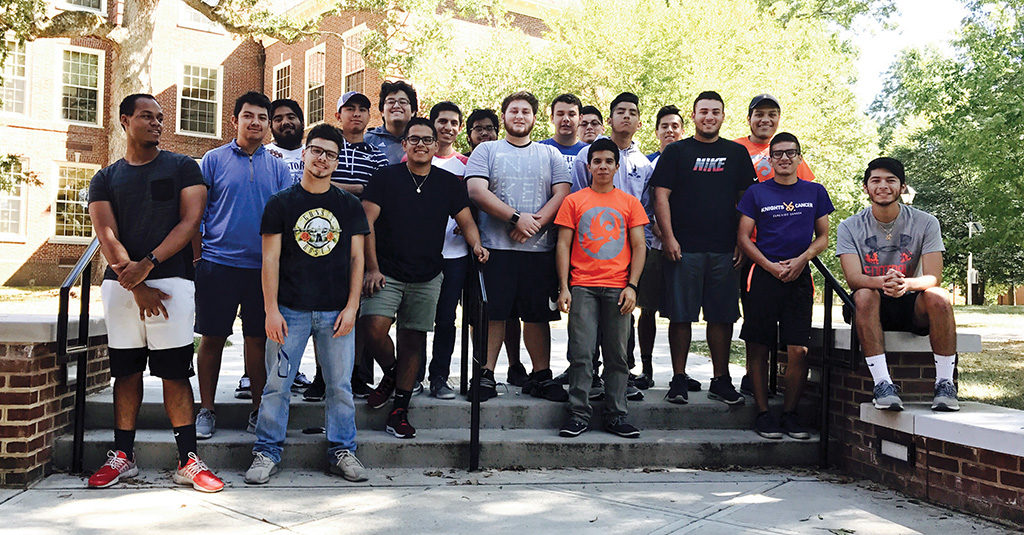
The Latino Male Initiative is also designed to reduce the dropout rates of Latino male students and give them a sense of belonging on campus. Students in the class are primarily from South America and Central America. Some are first generation and some have families who have lived in the U.S. for three to four generations, LMI instructor Núñez said.
“Teaching this class has been enjoyable, and the level of commitment and engagement from the students has been extraordinary,” she said. “Learning about their Latino culture is a very important component of the class.”
Through in-depth discussions on assigned novels and academic articles, students begin to learn about their cultural heritage in ways they have not learned before.
“One topic we wrote about was ‘What does it mean to be Latino to you,’” said Edison Angamarca ’21, a freshman whose parents are from Ecuador. “This was pure reflection and pulled from articles we read. From this class, I have realized my heritage and culture is something to value.”
Self-efficacy and being able to speak up for oneself are among the most important aspects of the class. Coming to Berea, Angamarca was much quieter in his class than he is now. He said the class has helped him be more communicative and feel more comfortable speaking up in his other classes as well.
One aspect of the class Angamarca enjoyed most was the guest speakers. His favorite speaker in particular,
Dr. Yoli Carter, talked about how the Latino voice comes out in one’s writing, and how some struggle to understand that difference in her style. He was able to appreciate the topic about which Carter spoke, saying the concept that different cultures have different writing styles was new to him. But perhaps the brotherhood has been the most compelling aspect of the class.
“If it was not for this class, I don’t think I would have met and bonded with as many Latino males,” Angamarca said.
Overall the impact of all three initiatives has been positive. These initiatives are reducing dropout rates among some groups of male students, and more importantly, are impacting and improving the lives of the students involved.
“These male-initiative students realize their beautifully positive culture and heritage,” Núñez said. “And from there, they are equipped with the knowledge and know-how to be successful in college and beyond.”


